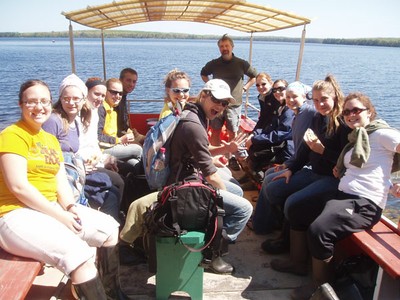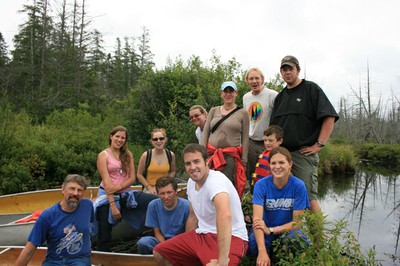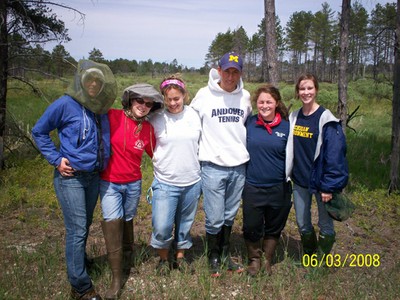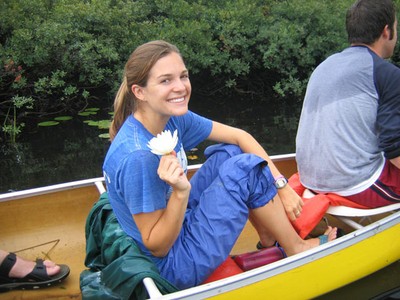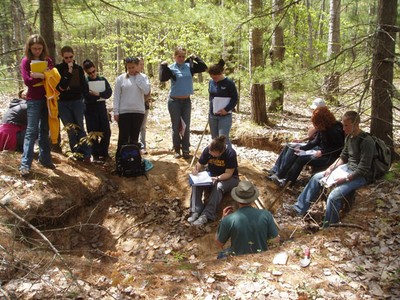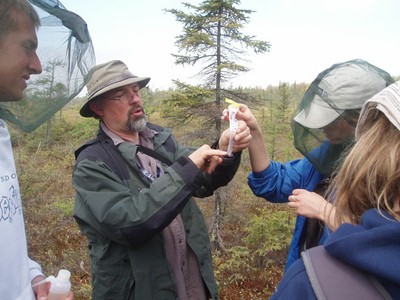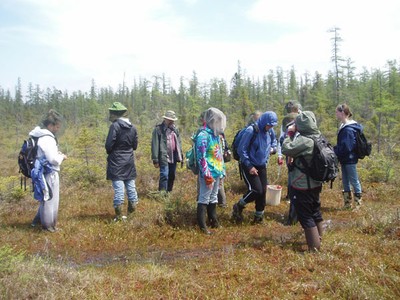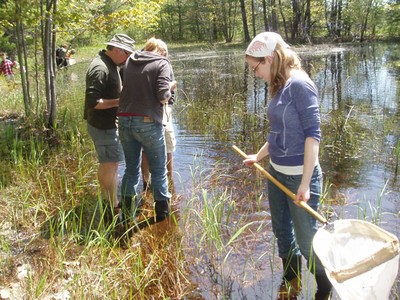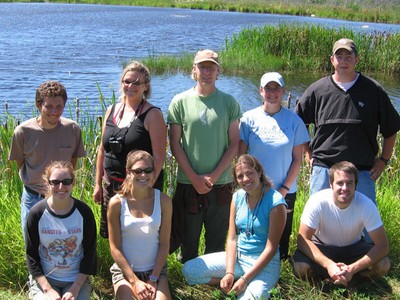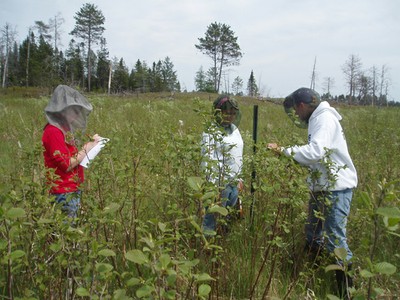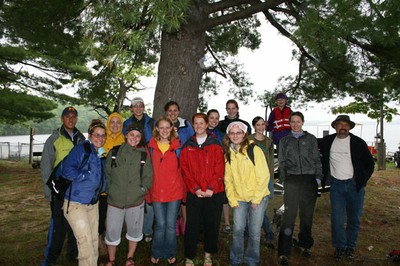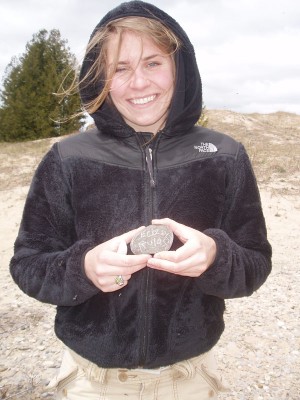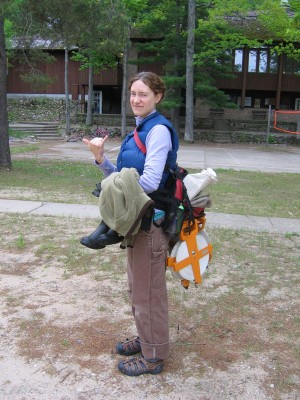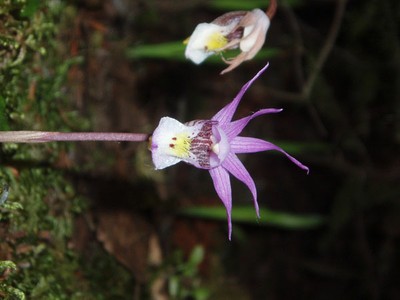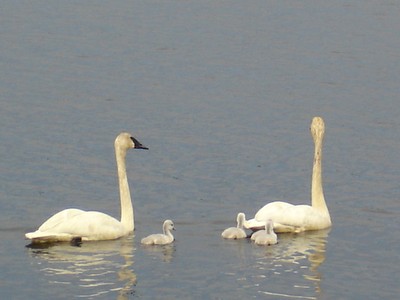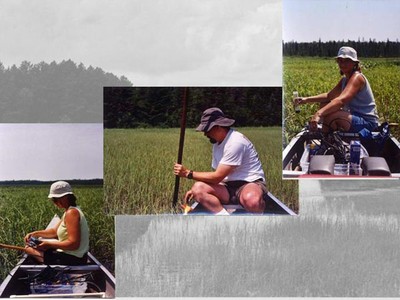Robert Pillsbury Ph.D.

Associate Professor
Department of Biology and Microbiology
HS41; (920)424-3069
pillsbur@uwosh.edu
Aquatic Ecologist
Education
- B.S. University of Minnesota, St. Paul, MN, 1983. Fisheries.
- M.S. University of Minnesota, Duluth, MN, 1986. Biology.
- Thesis Title: The pH-independent effect of aluminum on cultures of phytoplankton from an acidic Wisconsin lake.
- Ph.D. Bowling Green State University, Bowling Green, OH, 1993. Biology. Dissertation Title: Factors influencing the structure of benthic algal communities in acid lakes.
Research Interests
I am a broadly trained aquatic ecologist. Some of my research interests include:
- Algal Taxonomy and Ecology
- The effects of Zebra Mussels on the Great Lakes Ecosystem
- Wetland Ecology
- The Ecology of Wild Rice
- Developing Diatom Metrics to access Ecological Conditions
- The Ecology of the invasive alga Didymosphenia geminata.
Current Projects
Can algal community composition within detached nuisance Cladophora mats help Determine the source and size of future, beach-closing events? Every summer beaches are closed along the Great Lakes due to massive amounts of the filamentous green algal Cladophora being washed ashore. By examining the diatom community attached to these filaments and treating it as a type of identifying “fingerprint”, it may be possible to determine the off-shore sources of these algal masses. This knowledge could broaden the management options for recreational beaches.
Didymosphenia blooms in oligotrophic waters. Recently the invasive diatom Didymosphenia geminata has taken over trout streams around the world. We are investigating the mechanics of this phenomena. How does an alga produce massive blooms in oligotrophic systems. How can these blooms be controlled?
Performance of diatom metrics of ecological conditions in agriculturally dominated watersheds. Diatom-based metrics have been successfully used to monitor the health of many of our lakes and rivers. But these methods have not been well-examined in highly disturbed watersheds. Do diatoms lose their sensitivity towards environmental change once a certain threshold of disturbance has been reached? Can better metrics be developed for these systems?
See my resume for a more complete look at my teaching and research.
Research Sites
Here are some of the field sites and labs where my students or I have conducted research.
Trout Lake Biological Station-Wisconsin
Sokaogon Chippewa Community-Wisconsin
Seney National Wildlife Refuge
The University of Michigans Biological Station
Teaching
I enjoy teaching a wide range of classes. Since I have been at UWO, I have taught.
- Biol 106 – a non-major’s survey course of Biology
- Biol 260 – Environment of Living Systems
- Biol 326 – Introductory Limnology
- Biol 336 – Freshwater Algae
- Biol 766 – Diatom Taxonomy
- Biol 710 – Biostatistics
- ES 395 – Field Studies (in Belize) Approaches to Resource management of Tropical Ecosystems.
Students and Student Funding
I am always looking for motivated students (graduate or undergraduate) who are interested in getting research experience in Aquatic Ecology. We have been able to find funding for most projects. If interested, please contact me. To see who is working in the lab now click here.
Publications
- Lowe, R.L., R.W. Pillsbury, and A. Shrank. (in press) Aquatic Ecosystems of Northern Michigan. In K. Nadelhoffer and B. Hazlett (eds) Up in Michigan: One hundred Years of Environmental Change. UM Press. Ann Arbor.
- Pillsbury, R.W. (in press) Aquatic Impacts. In K. Nadelhoffer and B. Hazlett (eds) Up in Michigan: One hundred years of Environmental Change. UM Press. Ann Arbor.
- McGuire, M.A. and R.W. Pillsbury (in prep). Factors affecting the distribution of wild rice (Zizania palustris). Wetlands.
- Pillsbury, R.W. and K.A. Slavik. 2006. Pinnularia aldenii sp. nov., a diatom from acidic habitats in northern Michigan. Diatom Research. 21(2): 365-370.
- Nimmo, D.W., R.W. Johnson, M.A. Preul, R.W. Pillsbury, J.R. Self and E.A. Bergey. 2006. Determining site-specific toxicity of copper to daphnids and fishes in a brown-water ecosystem. Journal of Freshwater Ecology. 21(3): 481-491.
- Nimmo, D.W., M.A. Preul, C.J. Castle, J.R. Self, R.W. Pillsbury, and E.A. Bergey 2003. Effects of excess copper on the growth of wild rice (Zizania palustris) seedlings tested in reconstituted and natural waters. Environmental Management. 32(4):466-475.
- Pillsbury, R.W., R.L. Lowe, Y.D. Pan, and J.L. Greenwood. 2002. The indirect effects of zebra mussels (Dreissena polymorpha) on benthic algal resources in Saginaw Bay, Lake Huron. Journal of the North American Benthological Society 21(2): 238-252.
- Pillsbury, R.W. and E.A. Bergey. 2000. The effects of root mass and disturbance on wild rice (Zizania aquatica) survivorship. in: Williamson, L.S., L.A. Dlutkowski, and A.P. McCammon Soltis (eds.) Wild Rice Research and Management. Great Lakes Indian Fish and Wildlife Commission publication. Odanah, WI. 206-214
- Holomuzki, J.R., R.W. Pillsbury, and S.B. Khandwala. 2000 Interplay between dispersal determinants of larval hydropsychid caddisflies. Can. J. Fish. Aquat. Sci. 56: 2041-2050.
- Pillsbury, R.W. and R.L. Lowe 1999. The response of periphyton and metaphyton to manipulations of light resources in four acidic lakes in Northern Michigan. Hydrobiologia 394 : 69-81
- Lowe, R.L. and R.W. Pillsbury 1995. Shifts in benthic algal community structure and function following the appearance of zebra mussels (Dreissena polymorpha) in Saginaw Bay, Lake Huron. J. Great Lakes Research. 21(4): 558-566.
- Litteral, R.L., R.W. Pillsbury and R.L. Lowe. 1995. The response of the benthic algal community of Saginaw Bay, Near the Charity Islands, to changes in light penetration. Proceedings: 5th Internat. Zebra Mussel and other Aquatic Nuisance Organisms Conference. Toronto, Canada: 275-290.
- Pillsbury, R.W. and R.L. Lowe. 1994. The impact of zebra mussels on benthic algal communities in Saginaw Bay, Lake Huron. Proceedings: 4th Internat. Zebra Mussel Conference. Madison, WI: 575-591.
- Pillsbury, R.W. and J.C. Kingston. 1990. The pH-independent effect of aluminum on cultures of phytoplankton from an acidic Wisconsin lake. Hydrobiologia 194: 225-233.
- Swain, E.B., B.A. Monson, and R.W. Pillsbury. 1986. Use of exclosures to assess the impact of copper sulfate treatment on phytoplankton. In Redfield, G., J.F. Taggart and L.M. Moore (eds.) Lake and Reservoir Management. Vol. 11. Lake Manag. Soc. Washington, D.C. 303-308.

